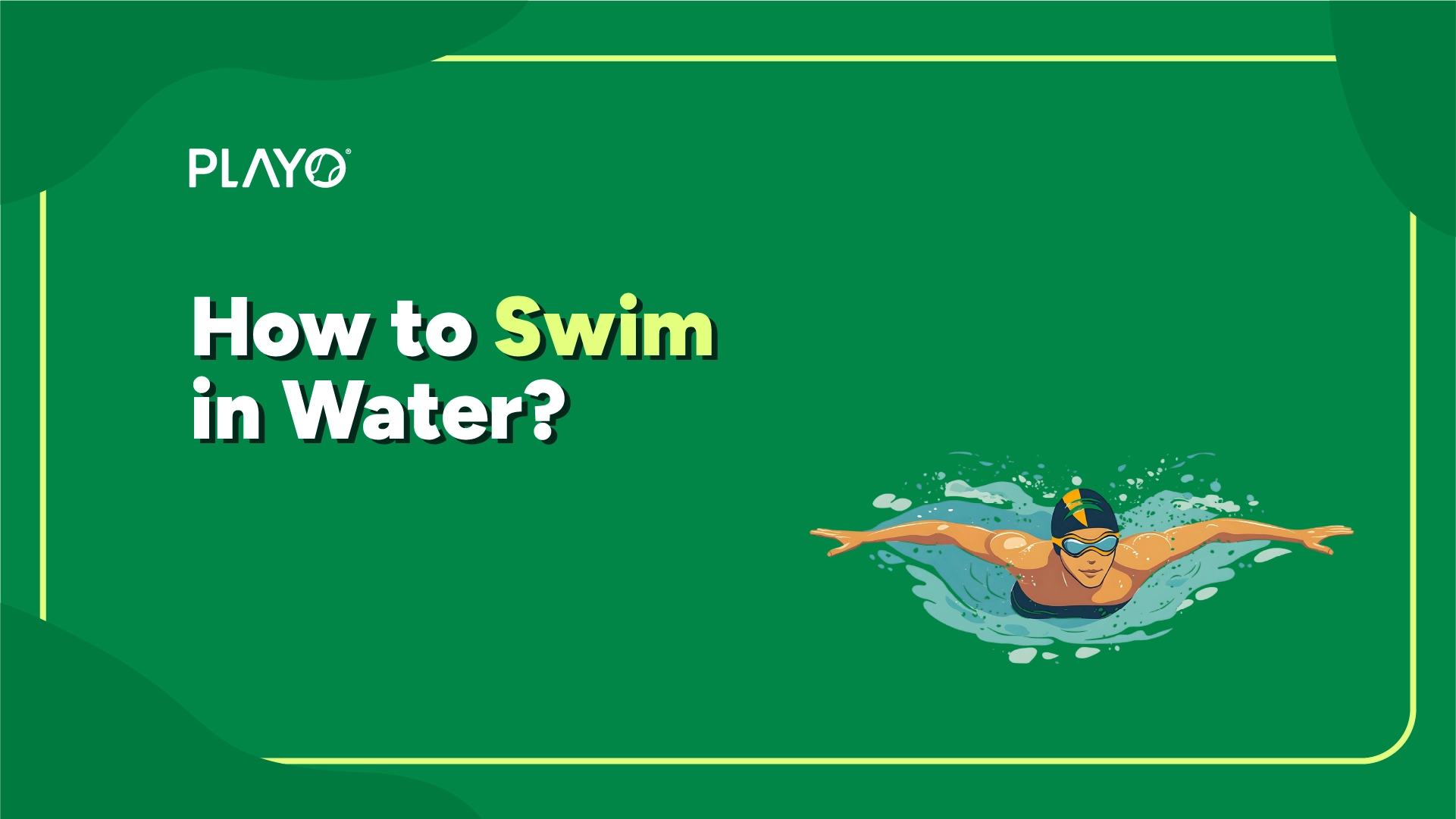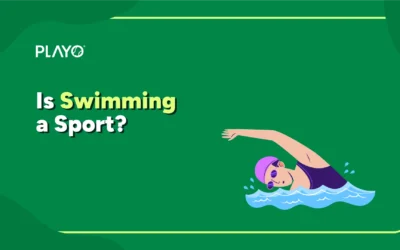Learning how to swim in water is a vital life skill that enhances safety, boosts confidence, and promotes lifelong health. To swim in water, you need to master three core skills – floating, breathing, and coordinated movement of your arms and legs. Start in shallow water to build comfort, practice rhythmic breathing, and learn to float before adding strokes like freestyle or backstroke. Swimming isn’t just a sport, but it’s a life skill that enhances safety, fitness, and confidence in any water environment. With consistent practice and the right techniques, anyone can learn to swim efficiently and enjoy the water fearlessly.
How to Overcome Fear and Build Water Confidence
Before you even think about strokes or kicks, you must address the emotional hurdle: fear. Many adults and children alike avoid learning to swim because of water anxiety. The key to overcoming this is gradual exposure combined with strict safety practices.
Safe Entry and Exit
Start by learning how to enter and exit the pool safely. Sit on the edge and gently slide into the water; it’s a simple way for beginners, especially children, to build confidence. Begin in waist-deep water where you can easily stand and get used to the feeling of being surrounded by water. Know where the ladders or steps are so you can exit quickly if needed, and keep one hand on the pool wall for support as you practice.
Water Safety Essentials
- Never swim alone. Always have a buddy or lifeguard present.
- Begin in shallow water where you can stand comfortably.
- Stay aware of your surroundings and avoid open water swimming or moving currents until advanced.
- Use flotation aids temporarily, but don’t become dependent on them.
Mental Strategies
Start with gradual exposure, walk around in the shallow end to get used to the water. Practice controlled breathing while standing in waist-deep water: inhale through your nose, exhale through your mouth. This simple routine calms your nerves and helps you relax as water touches your face. With regular practice, your comfort and confidence in the water will grow naturally.
How to Stand in Water While Swimming
Standing upright in water, even in chest-deep or waist-deep areas, is an essential survival and recovery skill for beginners. It’s especially important when you’re learning how to swim in water for the first time.
Technique for Standing in Water
- Start in shallow water: Keep your feet shoulder-width apart and firmly planted on the pool floor.
- Maintain balance: Bend your knees slightly and engage your core. Spread your arms outward or make small circular motions for stability.
- Practice walking and turning: Move slowly, turn around, and try regaining your balance. This builds comfort and coordination.
Treading Water for Deeper Sections
In deeper water, you can’t touch the bottom, so you need to tread water. This means staying upright while keeping your head above the surface. Try these movements:
- Sculling: Move your hands side to side like gentle figure eights.
- Eggbeater kick: Move each leg in circular motions alternately to stay afloat.
- Vertical kicking: Kick from your hips, not your knees.
These drills not only teach you how to stand in water while swimming but also prepare you for deeper pools later.
Read More: Tips to Improve Freestyle Swimming Technique
How to Float in Water While Swimming
Learning how to float in water while swimming is one of the easiest yet most important skills. Floating allows you to rest, breathe, or recover during fatigue, and it’s the basis of nearly every swimming style. Floating relies on buoyancy, the upward force that allows your body to stay on the water’s surface.
The Science of Buoyancy
Your body naturally floats because of the air in your lungs, which acts as a built-in flotation device. When you inhale deeply, your buoyancy increases; as you exhale, your body sinks slightly. The key to floating is relaxation – tense muscles make you sink faster, while relaxed ones help you stay afloat. Floating is all about balance, breath, and body position. Lie flat, breathe deeply, and allow the water to support you as you spread your weight evenly across the surface.
Step-by-Step Floating Techniques

1. Back Float (Best for Beginners)
- Start in waist-deep water.
- Lean your head back so your ears are submerged.
- Keep your chest lifted and your hips near the surface.
- Spread your arms and legs wide like a starfish.
- Take calm, steady breaths and let the water hold you.
2. Front Float
- Face the water and extend your arms forward.
- Take a deep breath and gently place your face in the water.
- Keep your body straight, with your hips near the surface.
- Kick lightly to stay level.
Common Beginner Mistakes
- Tensing the body or holding breath too long.
- Lifting the head too high causes the legs to sink.
- Losing focus on breathing rhythm.
You can also use a kickboard or pool noodle initially, but aim to float without aids as soon as you can. Floating improves your confidence, stamina, and water awareness.
How to Breathe in Water While Swimming
Learning how to breathe in water while swimming is what separates confident swimmers from anxious beginners. Poor breathing rhythm can lead to exhaustion or swallowing water, while proper breathing keeps you calm, maintains a steady oxygen supply, and prevents panic. When you breathe correctly, your strokes and kicks naturally fall into rhythm, making your movement smoother and more efficient.
Step-by-step breathing drills:
- Bubbling practice: In chest-deep water, take a deep breath, submerge your face, and exhale slowly through your nose or mouth to create bubbles.
- Inhale above, exhale underwater: When your head rises, inhale quickly; when it dips in again, exhale steadily to maintain a calm rhythm.
- Side breathing for freestyle: Turn your head slightly (not your whole body) to inhale as one arm pulls through the water. Rotate sides to stay balanced.
- Rotary breathing: Alternate your breathing sides every few strokes to build rhythm and endurance.
- Pro tip: Don’t hold your breath. Exhale continuously underwater to stay relaxed and maintain rhythm. Beginners can use a swim snorkel to focus on breathing.
Kicking and Arm Movements for Forward Motion in Swimming
Once you’re comfortable floating and breathing, it’s time to move forward. Swimming propulsion comes from combining kicks and arm pulls with proper timing.
Fundamentals of Flutter Kick
- Keep legs straight but relaxed, moving from the hips, not knees.
- Make small, quick kicks just below the surface.
- Keep ankles flexible, toes pointed slightly out.
Freestyle Arm Cycle
- Reach your arm forward into the water.
- Pull down powerfully toward your hip.
- Recover above water and repeat.
- Coordinate breathing with every few arm pulls.
Coordination Drill: Use a kickboard to isolate leg movements or hold the pool wall to practice your kicks and breathing timing. Combine these with rhythmic breathing once you’re comfortable.
How to Learn Swimming in Deep Water
Deep water can feel intimidating, but with the right foundation, you can progress safely. Once you’re confident with floating, breathing, and basic standing recovery, you’ll be better prepared to handle deeper sections of the pool. The key is to build your skills gradually so your body stays relaxed and your mind remains calm.
Safety First
Never start learning in deep water. First, ensure you can float on your back or front, tread water for 30 seconds, and swim at least 10 meters without touching the bottom. These basics give you control and confidence. Always practice with a buddy or under lifeguard supervision for safety.
Treading Water in Deep Sections
- Use an eggbeater kick (alternating circular leg movements).
- Move your hands in small sculling motions near your waist.
- Keep your body upright and your head above water.
Mental Preparation
Deep water only feels intimidating. With proper breathing control and calm strokes, you’ll find it no harder than shallow swimming. Practising gradual depth increases builds both technical and emotional confidence.
Gradual Transition
Start near the pool’s deep end, but stay close to the wall. As your comfort grows, move farther out. You can even use a life vest or floatation aid initially. With consistent practice, you’ll learn how to learn swimming in deep water safely and confidently.
Essential Gear to Accelerate Your Learning
The right equipment makes your learning smoother and safer. Here’s what helps:
- Kickboards: Develop leg strength and improve kicking coordination.
- Pull buoys: Focus on arm strokes and breathing technique.
- Goggles: Provide clear underwater vision and prevent eye irritation.
- Fins: Improve propulsion feel and help practice proper kick mechanics.
Your 4-Week Swim Starter Plan for Practice Routine
This 4-week starter plan gives beginners a clear, structured path to build confidence and technique in the water. Each week focuses on one essential skill set so you can progress safely and steadily without feeling overwhelmed.
| Week | Focus Areas | Practice Drills |
| First week | Water comfort + breathing + floating | Bubbling, back/ front float, wall holds |
| Second week | Kicking + standing recovery | Flutter kicks with board, walking drills, vertical balance |
| Third week | Arm strokes + side breathing | One-arm freestyle at the wall, rotary breathing |
| Fourth week | Combine skills | 5–10 meter swims, float-to-swim transitions |
Conclusion
Learning how to swim in water is a journey of patience, practice, and safety. Always swim with a buddy or under supervision. Use flotation aids only as learning tools. Warm up before entering cold water, stay hydrated, and never swim when tired. Fatigue is a leading cause of drowning.
Even after self-teaching basics, consider formal swim lessons to refine technique and build confidence. Remember that swimming is 90% mental. Trust the water, trust your body, and trust the process.
Download Playo on Android or iOS, or visit playo.co to start playing!
Frequently Asked Questions
Breathing, floating, kicking, arm movement, and treading water are the five foundational skills every swimmer must learn.
It refers to the limit of 15 meters underwater after a start or turn. In competitive swimming, swimmers must surface before this distance.
Body position, breathing, balance, and propulsion. Mastering these ensures efficient movement in water.
Exhale underwater and turn your head to the side just enough to inhale quickly before resuming your stroke.
Freestyle and backstroke are considered the most efficient and joint-friendly strokes for fitness and endurance.
In many ways, yes. Staying calm, controlling your breath, and trusting your body are key to mastering the water.





0 Comments